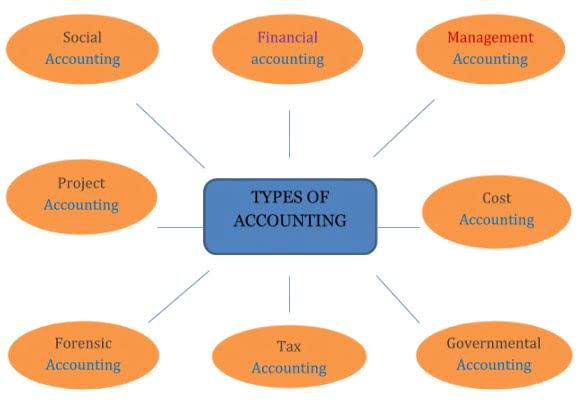Accounts, Journals, Ledgers, and Trial Balance Financial Accounting

It provides a clear and organized overview of the financial position of a business, as it contains separate accounts for assets, liabilities, equity, revenue, and expenses. While the journal captures every transaction, the ledger presents a more concise and structured representation of the company’s financial activities. The General ledger is more of a summary at the account level of every business transaction, which comes from various journals containing chronological accounting entries. This information entered into the journal and summarized into the ledger is then aggregated further into a trial balance, which is used to generate the financial statements of the business entity. Before a transaction is studied or classified, it has to be income statement recorded when it occurs.

How to Know What to Debit and What to Credit in Accounting
This attribute ensures the accuracy and integrity of the financial records, as errors can be promptly addressed before they impact subsequent stages of the accounting process. One of the key attributes of the journal is its ability to capture the complete transactional details. It includes information such as the accounts involved, the specific amounts debited or credited, and any additional notes or explanations.

Business is Our Business
In journal, accounts are prepared on the basis of source documents and vouchers. Thankfully, you don’t have to do all this manually, like in the old times. Instead, Wafeq does the heavy lifting and completes almost all relevant accounting transactions automatically and reliably.

Key Differences
- This makes it easy to trace specific transactions, for example, for auditing purposes or if you need to check any discrepancies in your financial information.
- A Ledger on the other hand is known as the book of second entry whereby the entries from the ledger are transferred to the journal and help to prepare the income statement of the company.
- There are many different types of journals in accounting, such as the sales journal, purchase journal, and general journal.
- So, the need for the journal may have been becoming increasingly obsolete in the computerized environment, but it still holds great importance in bookkeeping.
The Journals and Ledgers are key to maintaining the accounting information and records of a company for financial analysis. Journals record transactions as they happen, providing a clear, chronological account. From the ledgers, financial statements are prepared, crucial for reporting and making decisions.
Key Differences:
- Instead, Wafeq does the heavy lifting and completes almost all relevant accounting transactions automatically and reliably.
- But a ledger is more like a puzzle book where things are organized by categories, not in a specific order.
- This is important for accurate financial reporting and compliance with…
- Understanding journals and ledgers goes beyond accounting skills.
- In essence, the journal records transactions in chronological order, while the ledger groups transactions by account.
It is prepared to ensure that the total debits equal total credits, thus verifying the accuracy of accounting records before preparing financial statements. Recording business transactions forms the gym bookkeeping core of your bookkeeping. It does not make sense to record them only when taxes and audits are around the corner. Ensuring accurate accounts of your business requires diligent upkeep of journals and ledgers.
A ledger is a collection of all accounts used by a business, organized by account type (such as assets, liabilities, and equity). Each account in the ledger contains a running balance of all transactions related to that account. difference between journal and ledger Whether transactions are entered via computer or handwritten, adequate record-keeping is a necessity to maintain accurate financial data and create your company’s financial statements. By capturing these transactions, the general journal acts as a vital tool for maintaining comprehensive financial records. Posting is the fundamental process that connects the Journal and the Ledger. It involves systematically transferring the debit and credit amounts from a journal entry to the respective accounts in the ledger.
Ledger entries – format & example
It serves as a check and balance to ensure each transaction has been posted to the appropriate account. It is used in the process of posting transactions from the general journal to the general ledger. The use of journals has declined since the advent of computerized accounting systems. Many smaller accounting software systems store all transactional information directly in the general ledger, dispensing with all of the various types of journals, including the general journal. A ledger only contains information about specific accounts (assets, liabilities, etc.), not every transaction that has ever taken place. In fact, most ledgers will only contain information for a particular fiscal year or month.
Rent Expense Account
Imagine your Journal as a super detailed diary where you write down every single thing you buy or do with your money. It’s like listing every candy, toy, or game you get, one by one. This helps you keep track of exactly where your money goes every time you spend it. So, if you want to know how much you spent on video games last month, you can find it in your Journal because it records all the details of each purchase. The accounting record summarizing, in accounts, the transactions of a business and showing the resulting ending account balances. Understanding the distinction between a general ledger and a general journal is essential for anyone involved in accounting.
General Journal and General Ledger Key Takeaways
Imagine your Journal has all the juicy details – where, when, and how much you spent or earned, just like writing down every single thing you did with your money. But the Ledger is like looking at your piggy bank; it just tells you how much money you have in total, not every little thing. In chronological order, i.e. in the order of purchase, selling, etc. It is prepared out of transaction proofs such as vouchers, receipts, bills, etc. The journal does not reveal the total results of a transaction.

